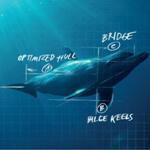Wärtsilä Designs Indian Research Vessel
 Wärtsilä has signed a contract to design and supervise the construction of a modern oceanographic research vessel for the marine wing of the Geological Survey of India (GSI). The new vessel will have accommodation for 69 people. With an overall length of 95 m, 19m beam, maximum draught of 6 m and speed of 14 knots, it will have an endurance of 45 days. Completion of the project is scheduled for the first quarter of 2012.
Wärtsilä has signed a contract to design and supervise the construction of a modern oceanographic research vessel for the marine wing of the Geological Survey of India (GSI). The new vessel will have accommodation for 69 people. With an overall length of 95 m, 19m beam, maximum draught of 6 m and speed of 14 knots, it will have an endurance of 45 days. Completion of the project is scheduled for the first quarter of 2012.
In addition to design and supervising the construction process, Wärtsilä will be involved in selecting the onboard scientific instruments, and in arranging training for GSI scientists to ensure that the vessel’s capabilities are fully utilized. Wärtsilä has 120 days to create a totally new design. “Our designers will take full account of the scientists’ needs,” says Mr Egil Sandvik, Sales Manager, Wärtsilä Ship Design. “Good facilities for handling equipment, laboratories and workshops, ample space for living quarters and meetings, the correct positioning of transducers and last but not least, good levels of comfort.”
A new set of rules apply to the design of this research vessel. The focus is on how the scientific tools perform and on the vessel’s ability to adapt to what she will be expected to explore in the future. “It’s an interesting design challenge,” says Sandvik. “She has to be capable of carrying out complicated operations such as handling ROVs (Remotely Operated Vehicles), supporting manned underwater submersibles and controlling autonomous drills that can drill up to 150 metres below the seabed at depths of a thousand metres – not to mention the collection of seismic data and simple operations such as water and soil sampling. The demands and requirements associated with future tasks always have to be kept in mind.”
“The new vessel is the third of its kind that Wärtsilä is designing for India,” says Mr Arne Stenersen, Managing Director, Wärtsilä Ship Design in Norway. “The first one, Sagar Nidhi, is already in service and being operated by the National Institute of Ocean Technology. She is expected to support research work in the Indian Ocean and the Antarctic. Sindhu Sadhana, the second vessel, is under construction.”






